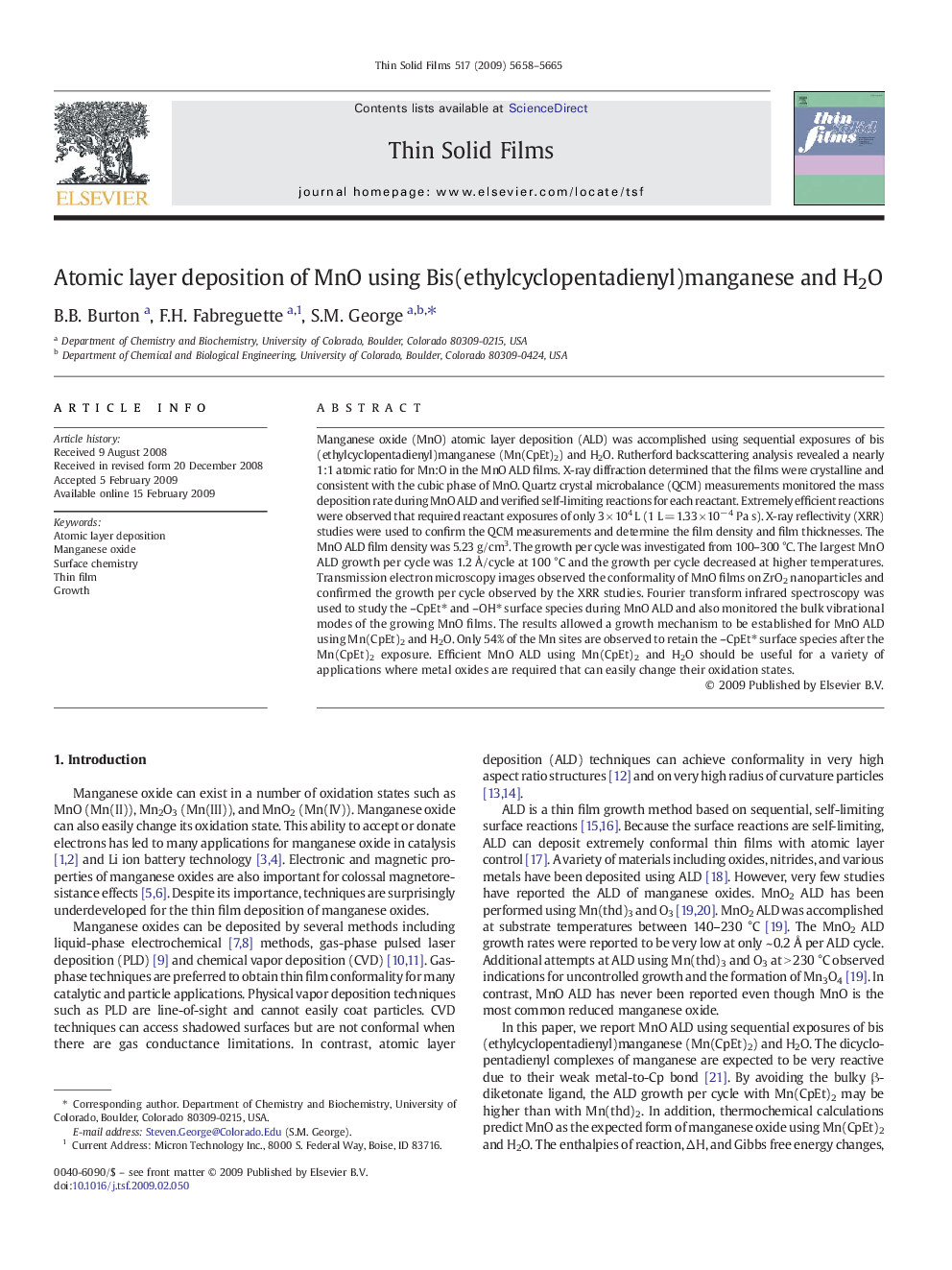| Article ID | Journal | Published Year | Pages | File Type |
|---|---|---|---|---|
| 1671509 | Thin Solid Films | 2009 | 8 Pages |
Manganese oxide (MnO) atomic layer deposition (ALD) was accomplished using sequential exposures of bis(ethylcyclopentadienyl)manganese (Mn(CpEt)2) and H2O. Rutherford backscattering analysis revealed a nearly 1:1 atomic ratio for Mn:O in the MnO ALD films. X-ray diffraction determined that the films were crystalline and consistent with the cubic phase of MnO. Quartz crystal microbalance (QCM) measurements monitored the mass deposition rate during MnO ALD and verified self-limiting reactions for each reactant. Extremely efficient reactions were observed that required reactant exposures of only 3 × 104 L (1 L = 1.33 × 10− 4 Pa s). X-ray reflectivity (XRR) studies were used to confirm the QCM measurements and determine the film density and film thicknesses. The MnO ALD film density was 5.23 g/cm3. The growth per cycle was investigated from 100–300 °C. The largest MnO ALD growth per cycle was 1.2 Å/cycle at 100 °C and the growth per cycle decreased at higher temperatures. Transmission electron microscopy images observed the conformality of MnO films on ZrO2 nanoparticles and confirmed the growth per cycle observed by the XRR studies. Fourier transform infrared spectroscopy was used to study the –CpEt⁎ and –OH⁎ surface species during MnO ALD and also monitored the bulk vibrational modes of the growing MnO films. The results allowed a growth mechanism to be established for MnO ALD using Mn(CpEt)2 and H2O. Only 54% of the Mn sites are observed to retain the –CpEt⁎ surface species after the Mn(CpEt)2 exposure. Efficient MnO ALD using Mn(CpEt)2 and H2O should be useful for a variety of applications where metal oxides are required that can easily change their oxidation states.
